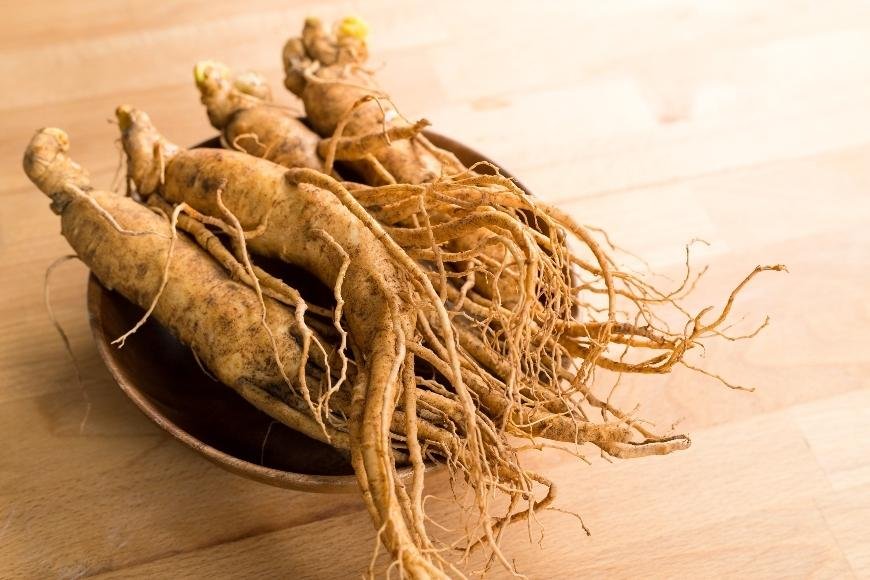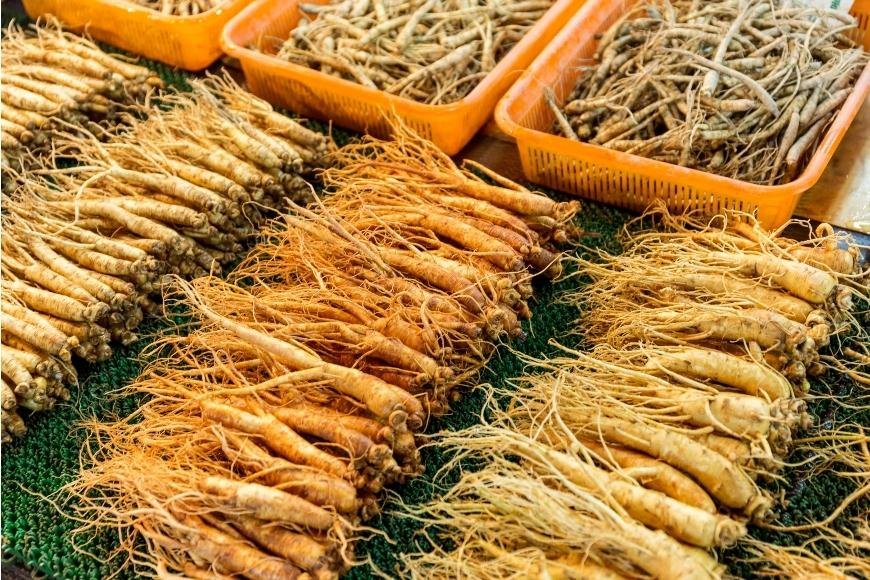How to Extract Ginseng?
Learn how to extract Ginseng with our easy guide, covering preparation, extraction, storage and benefits of this powerful herbal remedy.

Have you ever wondered how to extract Ginseng? This powerful herb, known for its incredible health benefits and rich history, can be easily extracted at home. In this comprehensive guide, we will delve into the process of extracting red ginseng and unveil the secrets behind obtaining those precious ginseng saponins.
In this guide, we'll take you through the process of preparing and extracting Panax ginseng roots to create a potent Korean red ginseng extract, as well as discuss proper storage techniques for maintaining its effectiveness. Furthermore, we'll discuss proper storage techniques that ensure your homemade Korean ginseng concoction remains effective and fresh.
Last but not least, we'll explore the numerous benefits associated with consuming this ancient remedy. So buckle up as we embark on an exciting journey towards unlocking the full potential of this remarkable plant!
Table of Contents:
- What is Ginseng Extract?
- Why Make an Extract?
- What You Need to Make an Extract
- Preparing the Ginseng
- Extracting the Ginseng
- Storing Your Extract
- Frequently Asked Questions How to Extract Ginseng?
- Conclusion
1. What is Ginseng Extract?

Ginseng extract is a concentrated form of the active compounds found in ginseng, a popular herbal supplement known for its potential health benefits and energizing properties. For centuries, ginseng has been utilized in traditional Asian medicine to enhance vigor, strengthen cognitive performance and bolster overall health.
Why Make an Extract?
Making your own ginseng extract allows you to harness the full power of this potent herb while also ensuring that you're getting a high-quality product free from additives or impurities. By extracting the active compounds yourself, you can create a more concentrated and effective supplement tailored to your specific needs.
Ginseng extract is a popular natural remedy that has been used for centuries to treat various ailments. To craft a quality ginseng extract, one must take into account the necessary steps and considerations.
2. What You Need to Make an Extract
Gather the required materials and tools to ensure a smooth extraction process. Having everything ready will make the extraction process smoother and more efficient. Here is a list of items you'll need:
- Fresh or dried ginseng root: Choose high-quality roots for better results. Fresh roots can be found at local markets or health food stores, while dried ones are available online from reputable sources like Mountain Rose Herbs.
- Glass jar with lid: A clean glass jar with a tight-fitting lid is crucial for storing your extract during the extraction process.
- Vodka or grain alcohol (at least 80 proof): High-proof alcohol serves as an effective solvent for extracting ginsenosides, which are responsible for many of ginseng's benefits.
- Cheesecloth or fine mesh strainer: These will help separate solid plant material from liquid after extraction.
- Funnel: A funnel makes transferring liquids between containers easier and less messy.>
In addition to these basic supplies, having some optional tools on hand can also enhance your experience when creating a homemade ginseng extract:
- Mortar and pestle: This traditional toolset allows you to grind up fresh or dried ginseng root manually before starting the extraction process.
- Kitchen scale: A kitchen scale helps measure out precise amounts of ingredients when preparing larger batches of ginseng extract.
- Amber glass dropper bottles: These dark-colored containers protect your finished extract from light exposure, which can degrade its potency over time. They also make it easy to dispense the desired amount when taking your homemade ginseng supplement.
Once you've acquired the essential items and equipment, it's time to start preparing the ginseng for extraction.
3. Preparing the Ginseng
Before you can make your ginseng extract, it's essential to properly prepare the root to ensure maximum potency and effectiveness. To ensure potency and effectiveness, this section will guide you through the process of cleaning, drying, and slicing your ginseng for extraction.
Cleaning Your Ginseng Root
The first step in preparing your ginseng is to thoroughly clean the root. Since it grows underground, there may be dirt or debris attached that needs to be removed before extraction. To clean your ginseng:
- Rinse the roots under cold running water.
- Gently scrub away any visible dirt using a soft brush or cloth.
- Rinse once more with icy water, then pat dry using a paper towel or cloth.
Drying Your Ginseng Root
To get optimal results from your extraction process, it's crucial that you completely dry out your cleaned ginseng root beforehand.
Air-Drying Method:
- Slice the cleaned roots into thin pieces (about 1/8-inch thick).
- Lay them on a wire rack placed over a baking sheet in an area with good airflow but no direct sunlight..
- Rotate slices every day until they're fully dried - this usually takes about one week depending on humidity levels.
Note: It's important not to rush the drying process, as overheating can damage the active compounds within ginseng. Be patient and ensure that your root is fully dried before moving on to extraction.
Slicing Your Dried Ginseng Root
Once your ginseng root is completely dry, it's time to slice it into smaller pieces for easier extraction. Using a sharp knife or kitchen shears:
- Cut thin strips lengthwise along the grain of each dried piece..
- If desired, you can further chop these strips into small cubes for even more efficient extraction.
Your prepared ginseng is now ready for extraction. In the next section, we'll guide you through extracting those valuable compounds from your sliced roots so that you can enjoy all their potential benefits.
4. Extracting the Ginseng

This guide will take you through the steps of extracting the active components from ginseng root, enabling you to make a powerful extract in your own home. By following these steps, you'll be able to create your own potent ginseng extract at home.
Alcohol Extraction Process: Making Ginseng Tincture
- Cut or grind your prepared dried ginseng root into small pieces or powder form using a sharp knife or grinder.
- Weigh out approximately one part ground-up dried ginseng root by weight and combine with five parts high-proof food-grade ethanol like Everclear or vodka in a clean glass jar with lid.
- Seal the jar tightly and shake it well to mix the contents.
- Store the jar in a dim, cool area for no less than two weeks, giving it a shake every day to guarantee appropriate extraction of dynamic mixes.
- After two weeks or more, strain the liquid through a fine mesh strainer or cheesecloth into another clean glass container. Discard the ginseng solids.
- Your ginseng tincture is now ready. Store it in an amber dropper bottle away from heat and light for optimal shelf life.
5. Storing Your Extract
Now that you've successfully extracted the active compounds from ginseng, it's crucial to store your extract properly to maintain its potency and extend its shelf life. In this section, we'll discuss the best practices for storing your ginseng extract.
Airtight Containers
The first step in preserving your ginseng extract is selecting an appropriate container. Airtight containers made of glass or high-quality plastic are ideal for storage since they prevent exposure to air and moisture which can degrade the quality of your extract over time. Amber-colored glass jars are particularly useful as they also protect against UV light damage.
Cool and Dark Environment
Storing ginseng extracts in a cool, dark environment away from direct sunlight or heat sources will help preserve their chemical composition and prevent oxidation. This helps preserve their chemical composition and prevents oxidation that could lead to loss of potency. A cupboard, pantry, or even a dedicated drawer will suffice for proper storage conditions.
- Temperature: Aim for temperatures between 50-70°F (10-21°C) when storing your ginseng extract.
- Humidity: Keep humidity levels low by avoiding damp areas like basements or bathrooms with poor ventilation.
Date and Label Your Extracts
Label your extracts with extraction date, concentration level (if applicable), and any other relevant details to monitor their age and ensure peak potency. This will assist you in tracking the freshness of your extracts, guaranteeing that they are utilized while at their most powerful.
Freezing for Long-Term Storage
If you plan on storing your ginseng extract for an extended period, consider freezing it. Freezing can significantly prolong the shelf life of your extract by slowing down any potential degradation processes. To preserve the extract, place it in a container that is suitable for freezing or use silicone trays to form individual cubes which can be quickly defrosted when necessary.
In summary, proper storage is essential in preserving the quality and potency of your homemade ginseng extract. By following these guidelines, you'll be able to enjoy its numerous health benefits for months or even years after extraction.
Frequently Asked Questions How to Extract Ginseng?
How do you make ginseng extract at home?
To make ginseng extract at home, first clean and slice the fresh or dried ginseng root. Then, place it in a glass jar with high-proof alcohol (like vodka) to cover the root completely. Seal the jar tightly and let it sit for 4-6 weeks, shaking occasionally. Afterward, strain out the solid pieces and store your liquid extract in a dark bottle.
How do you extract red ginseng?
Red ginseng extraction involves steaming fresh white ginseng roots before drying them under sunlight or heat. This process turns their color to reddish-brown and enhances their active compounds. Once dried, follow the same steps as regular ginseng: chop into small pieces, soak in alcohol for several weeks, then strain and store.
What is the extraction process of ginseng?
The extraction process of Ginseng typically involves soaking chopped-up roots in high-proof alcohol for an extended period (usually 4-6 weeks). The alcohol acts as a solvent that extracts beneficial compounds from the plant material while preserving its potency. After this time has passed, filter out any solids to obtain your liquid extract.
What is the best way to take ginseng extract?
The best way to take Ginseng Extract is by using a dropper or measuring spoon to consume it directly under your tongue or mixed with water/tea/juice/smoothie according to desired dosage (Healthline). Hold it under your tongue for about 30 seconds before swallowing; this allows faster absorption into your bloodstream through sublingual glands.
Conclusion
Ginseng extract can be a powerful way to maximize the potential of this healing herb. Creating your own ginseng extract is achievable with the right ingredients and understanding of extraction methods, as well as storage solutions for your finished product. With careful preparation, extraction techniques, and proper storage methods for your finished product; you can enjoy all the benefits that taking ginseng extract has to offer. So why not try it yourself today? You won't regret it when you experience first-hand what an amazing supplement extracted ginseng can be.




































































































































